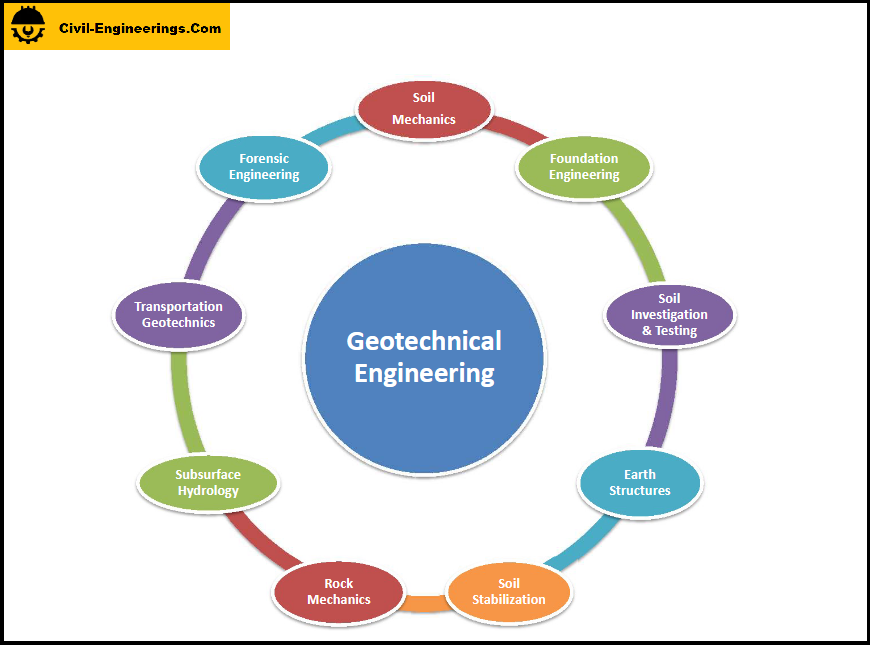Not known Details About Geotechnical Engineering For Construction Projects
Geotechnical Engineering For Construction Projects for Dummies
Table of ContentsFacts About Geotechnical Engineering For Construction Projects UncoveredSome Known Details About Geotechnical Engineering For Construction Projects The Single Strategy To Use For Geotechnical Engineering For Construction ProjectsThe Single Strategy To Use For Geotechnical Engineering For Construction ProjectsWhat Does Geotechnical Engineering For Construction Projects Mean?An Unbiased View of Geotechnical Engineering For Construction Projects
The role of geotechnical design substantially manages realizing the attributes of dirt and rock, which might vary significantly by their thickness, wetness material etc. These functions must be examined by geotechnical engineers to anticipate their motions under various scenarios. The security as well as security of frameworks are influenced by dirt conditions, making this evaluation necessary.A geotechnical designer will take a look at dirt to identify the bearing capacity of the earth and recommend correct structure types, such as shallow structures, deep structures like piles, or specialized solutions like drifting foundations for soft dirts. Comprehending the attributes and activities of soil and rock, in addition to how they communicate with constructions that have actually been put up on or within them, is one of the primary explanations for why geotechnical engineering is very important.
Environmental defense is completed with geotechnical design. Expertise in air, water, and soil quality maintenance is put to use by geotechnical engineers to reduce the unfavorable effects of jobs.
Framework development, offshore engineering, passage building and construction, and deep structures. Risk-based design and multidisciplinary teams. These elements will keep the field advancing and ensure its continued significance in the years to come. To summarize, geotechnical engineering is a crucial discipline that maintains the strength and honesty of civil framework. Geotechnical engineers add to making building tasks reliable around the globe by understanding the behaviour of planet products and applying suitable preparation approaches.
The smart Trick of Geotechnical Engineering For Construction Projects That Nobody is Discussing
By checking out soil, rock, and subsurface conditions, geotechnical engineers give vital understandings that aid in the layout, building, and upkeep of buildings and facilities.

Our Geotechnical Engineering For Construction Projects Ideas
Research laboratory testing: Figuring out the residential properties of dirt and rock. Area screening: Performing tests on-site to assess conditions. Analysis and layout: Making use of information to design foundations, maintaining wall surfaces, tunnels, and other frameworks. A number of prominent building projects have actually successfully used geotechnical design to ensure their stability and safety. For instance:: The globe's highest building needed a deep understanding of the underlying geology.

As a leader in geotechnical design, BECC Inc. is committed to supplying cutting-edge and efficient options that satisfy the highest possible criteria of high quality and security. To find out more on just how BECC Inc. can support your next building and construction job, contact us today and let us aid you improve strong ground.
William Rankine, a designer and physicist, developed an alternative to Coulomb's planet pressure concept. Albert Atterberg established the clay uniformity indices that are still made use of today for dirt category. In 1885, Osborne Reynolds recognized that shearing reasons volumetric dilation of thick products and contraction of loosened granular products. Modern Get the facts geotechnical engineering is claimed to have actually started in 1925 with the publication of Erdbaumechanik by Karl von Terzaghi, a mechanical designer and geologist.
All about Geotechnical Engineering For Construction Projects
Terzaghi likewise established the structure for concepts of birthing ability of foundations, and the theory for forecast of the rate of negotiation of clay layers as a result of loan consolidation. After that, Maurice Biot completely created the three-dimensional dirt consolidation theory, prolonging the one-dimensional model previously developed by Terzaghi to a lot more general hypotheses and introducing the set of fundamental formulas of Poroelasticity.
Geotechnical designers examine and identify the residential properties of subsurface conditions and products.
The Only Guide for Geotechnical Engineering For Construction Projects
Geologic mapping and analysis of geomorphology are typically finished in consultation with a rock hound or design rock hound. Subsurface exploration usually involves in-situ screening (as an example, the standard penetration examination and cone penetration test). The digging of test pits and trenching (especially for situating faults and slide planes) might also be used to learn concerning dirt problems at deepness. Still, they are often utilized to permit a geologist or engineer to be reduced right into the borehole for straight visual and hand-operated exam of the dirt and rock stratigraphy. Numerous soil samplers exist to satisfy the demands of different design projects. The conventional penetration test, which utilizes a thick-walled split spoon sampler, is the most common way to collect disrupted examples.

If the user interface between the mass and the base of a slope has an intricate geometry, incline security evaluation is tough and mathematical solution techniques are called moved here for. Usually, the interface's specific geometry is unknown, and a streamlined interface geometry is assumed. Limited slopes call for three-dimensional designs to be analyzed, so most inclines are examined presuming that they are considerably broad and can be represented by two-dimensional models.
Everything about Geotechnical Engineering For Construction Projects
Creating the layout based on a working theory of behavior prepared for under the most potential problems. Choice Related Site of amounts to be observed as building profits and determining their prepared for worths based on the functioning hypothesis under the most undesirable conditions.
Measurement of quantities and examination of actual conditions. Design modification per actual conditions The observational technique is appropriate for construction that has actually currently begun when an unanticipated growth occurs or when a failure or mishap looms or has already taken place. It is inappropriate for jobs whose design can not be changed during building and construction.